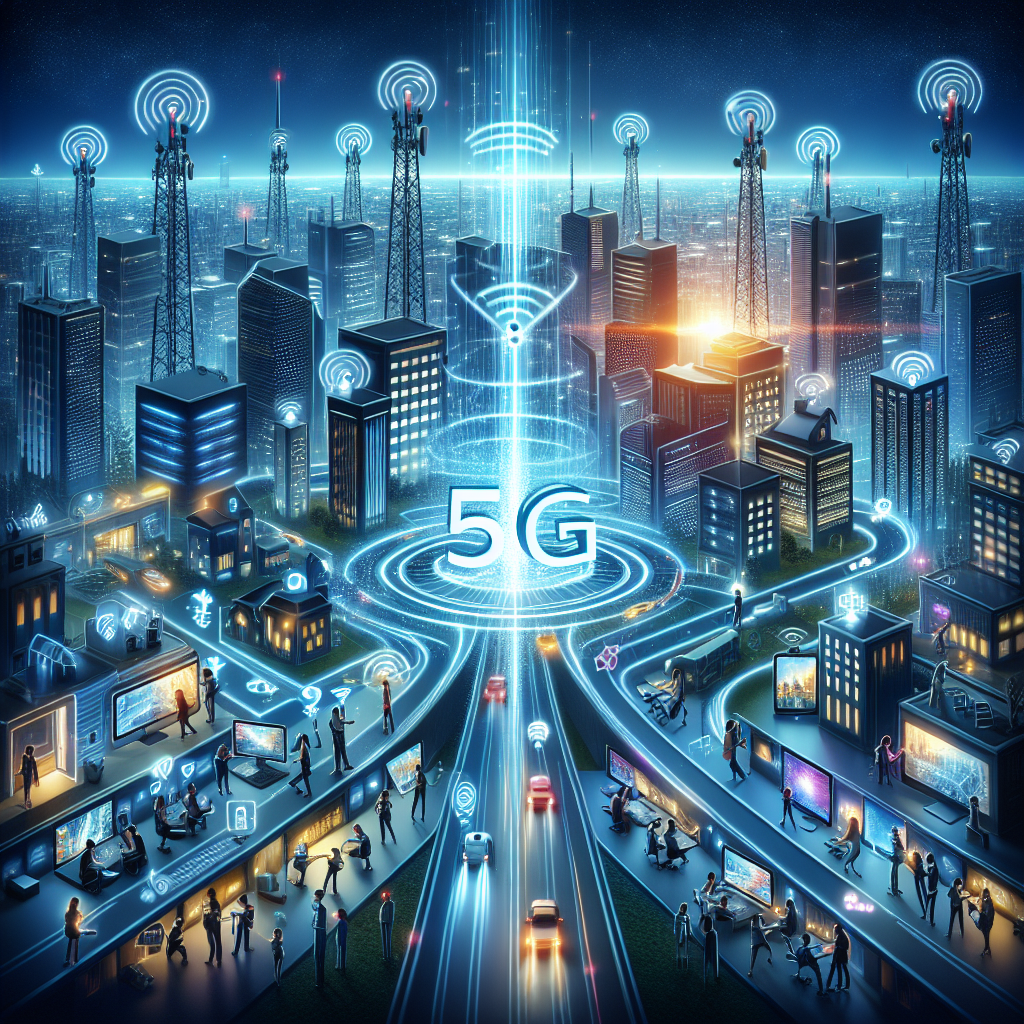As an introduction, one can only fathom what gaming and watching movies will look like in the future. Imagine downloading an entire HD movie in just a few seconds or playing an online game without any lag, no matter where you are. Sounds extremely futuristic. Well, this is exactly what the 5th Generation of Technology promises. 5G aims to take wireless communication connectivity to the next level as it is designed to take all of the manipulation speed, reliability, and efficiency into account, as compared to any network that was ever created before 5G. But what makes 5G different from 4G, and do we actually get to experience everything that it promises? How does it work? Most importantly, how will life as we know it change in its due course?
To address all of the concerns, we are telling you that plenty of myths surround Technology 5G. In this article, we’ll break down the 5th Generation of Technology in simple terms, explore its benefits, and discuss how it will work in the near future.
What is 5G Technology and How Does It Work?
Time traveling to 5G, this generation is a set beyond everything. Mobile internet is the “New Norm” in the present, and you are reading this article from your cell phone or tablet, then while playing a java-enabled online multiplayer game or listening to anything via streaming services, be ready to witness high-speed gaming like never before with 4G in 2010.
Looking even further into the future, 5G uses radio waves like previous generations, but the difference is in speed, latency, and capacity. What image do you portray in your head when thinking about electricity? Well, expect to feel the exact same way when necessary. Instead of being treated like a utility, 5G gets to operate beneath three frequency bands.
- Low-band (below 1GHz): Frequencies that travel long ranges but at a low speed.
- Mid-band (1-6GHz): More comprehensive balance between speed and distance.
- High-band (above 24GHz, mmWave): Problems with short-distance coverage are countered with extreme speed.
One of the greatest technologies is Massive MIMO (Multiple Input, Multiple Output), which lets multiple devices connect at once without any lag. This will be particularly helpful as billions of smart devices—from autonomous vehicles to smart home appliances—come to life.
How Fast is 5G and Why Does It Matter?
Everyone has encountered slow internet speeds at some stage- whether it be endlessly waiting for videos to buffer or to take video calls gets abruptly cut off. These problems are solved with 5G technology through:
- Speeds up to 10 Gbps, which is an astounding 100 times faster than 4G.
- Ultra-low latency (1 ms or fewer), effectively no delay when transferring data.
- Enhanced energy conservation, allowing devices to work longer with a single charge.
But what is the relevance of this impressive speed? Consider a surgeon conducting operations with remote control, autonomous cars watching out for collisions in real-time, and augmented reality is the norm. All of this can only be achieved on a network that serves instant response, which is exactly what 5G technology gives.
5G will make a global impact, and not just via faster internet, but through improved communication throughout industries.
Industries That Will Be Transformed by 5G
Let us examine some of the aspects that are most likely to change:
1. Healthcare
Doctors will audit and perform telemedicine with near zero lag, essentially allowing them to conduct robotic surgical procedures remotely.
2. Automotive and Transportation
Traffic signals and cars that drive themselves will relay real-time information. A delay of fractions of a second between signals from vehicles and traffic lights can lead to disasters. Roads will be safer with 5G technology as vehicles will be able to make instantaneous decisions.
3. Smart Cities
Picture a city where basic infrastructure adapts to the condition of the environment, such as changes in vehicles on the road or speed, and waste collection is performed automatically while responding to emergencies is quicker than it has ever been before. IoT (Internet of Things) devices will help run smarter cities powered by 5G networks.
4. Entertainment and Gaming
Streaming services will provide video and movies in buffer-less 4K and 8K ultra-high-definition, while gaming platforms in the cloud will render expensive gaming consoles useless. Virtual Reality (VR) and Augmented Reality (AR) experiences will become extremely rich.
5. Manufacturing and Industry 4.0
Factories will be fully automated in the near future. AI-powered robotics will take charge of precision tasks while the need for physical human workers will decrease. 5G sensors will monitor machines in real-time, resulting in lower downtimes and increased productivity.
The Challenges of 5G Technology
Even though the prospective capabilities of 5G technology are mind-boggling, there remain hurdles that must be solved first:
1. Infrastructure Expenses
In order to set up 5G networks, new cell towers, fiber-optic cables, and advanced equipment have to be installed. This is pricey and difficult, especially for the more rural regions.
2. Initial Limited Coverage
The difference between 4G and high-band 5G is that distance is a problem for 5G signals, making it difficult for them to travel far. This means carriers need to build more towers, which takes time.
3. Cyber Security Concerns
The number of cyberattacks that could happen with billions of devices connected to the 5G world is greatly increased. Everything from smart homes to self-driving cars could be hacked. Stricter security measures will be needed.
4. Health Concerns
Many people believe that the use of powering radiation from 5G towers could cause health issues or concerns, even though science hasn’t proven it. The long-term effects of it is still being researched.
What’s Next for 5G?
5G technology has some issues, but that isn’t stopping it from expanding. By 2025, over 60% of the world’s population will have access to this technology. Over the next few years, we can hope for:
- 5G phones and devices are being made more efficient and affordable.
- Coverage around the world is more inclusive to rural regions.
- Improvements in 6G are anticipated around the year 2030 and are expected to provide even greater speeds.
The future is closer than we think. New innovations—some we haven’t imagined yet—will emerge as businesses start utilizing 5G technology.
Conclusion: Is 5G the Future?
One thing is certain: 5G technology will change the way people connect, work, and live their lives. With the incredible increase in speed, near-instant response times, and gigantic amounts of connectivity, limitless doors will be opened to innovations that once seemed impossible.
Sure, there are challenges, but as technology evolves, the difficulties will have solutions. The question isn’t if the world of 5G technology is going to change the world; it’s how fast it will happen.
Are you ready for the future? Keep up to date with the latest innovations from TechTonic Blogs, which will show you the most significant changes that will impact the world with all its news and trends.




